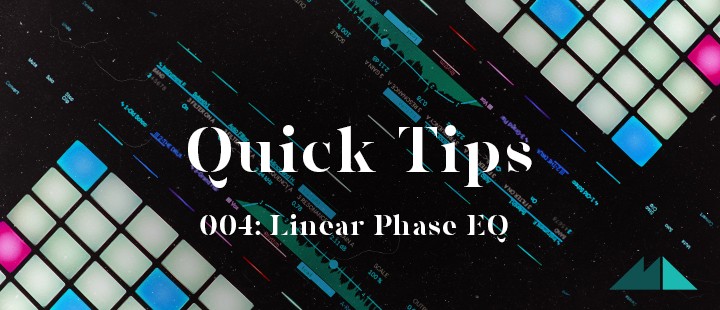
The fourth entry in our Quick Tips series is all about EQ - linear phase EQ, to be precise. I'm sure many of you have heard of this type of EQ but, like me until very recently, don't really know what makes it different from a regular channel EQ. To further complicate things, these units look pretty much identical to normal EQ devices, often offering the same multi-band notches and shelving functionality. There are crucial differences however, which should have a profound effect on where and when you use this type of EQ module.
The major difference between channel and linear phase EQ is that the latter perfectly preserves the phase of the signal running through it. 'So what'' you might ask and the answer is that shifting the phase of a signal changes the way it sounds, which can either be a good or bad thing depending on the context.
So, regular EQs introduce phase shift to subtler or stronger degrees depending on the model, which colours the sound being passed through them. Linear phase EQs, on the other hand, do not alter phase and thus are deemed to be more transparent i.e. less likely to alter timbre, than their channel counterparts. This makes them ideal candidates for mastering, which is a stage in the production process where you really only want to work on very specific frequency areas of your summed signal without affecting those adjacent.
'Great! So let's use linear phase EQ all the time!' I hear you say but hold your horses there because linear phase EQs introduce more latency into the signal flow than regular EQs. The technology requires more processing, hence a larger delay in the time from the signal going in and coming out of the unit. This renders them pretty inadequate for use during recording and on software instrument channels.
The Lowdown
To recap, linear phase EQ does not affect phase but does introduce latency into the signal flow. This makes it a strong candidate for mastering, as this is typically where you want to change the timbre of your mix the least and is also where latency matters least. Of course, due to the inherent weirdness of all things sonic, you may come across a linear phase EQ that colours your sound in the best possible way, or a channel EQ that introduces loads of latency into your session. So as ever, take the above only as a rough guide - let your ears be the final judge!
Check out the complete Quick Tips series here.










